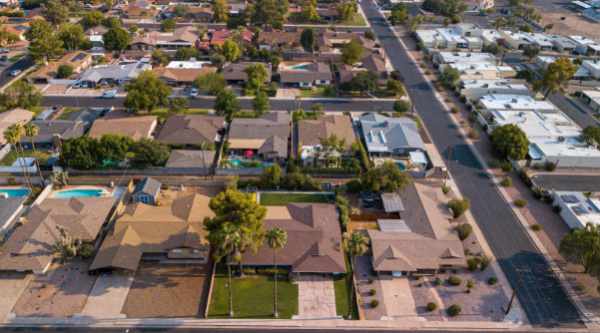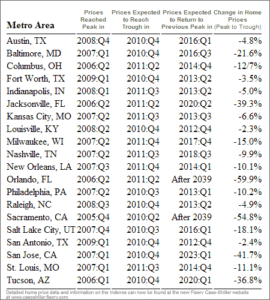With a high demand for space and tranquility, suburban living is shaping the United States housing market in a big way. As cities become more crowded and expensive, many families and individuals are turning to the suburbs for a better quality of life. The pandemic has also had an enduring effect, with many people experiencing more flexibility with working options. Here’s how suburban living influences housing market trends across the US and the world.

7 Ways Suburban Living Influences Housing Market Trends
Residential has traditionally been first on the list of profitable real estate sectors. That’s not likely to change due primarily to its massive size which affords more opportunity. But within residential real estate understanding the current trends helps you be better prepared for what’s to come.
1. Increased Demand for Single-Family Residences (SFRs)
Many Americans prioritize spacious, single-family homes with yards. This is often especially important for families or those working remotely. This demand has driven up prices in suburban markets, making these areas more competitive than ever. Homebuilders are responding by focusing on creating more suburban, detached housing options, with single-family construction permits growing by 17.6% in large metro core counties during Q2 2024.
2. A Shift Toward Remote-Work-Friendly Homes
With remote and hybrid work setups now commonplace, many buyers are looking for homes with designated office space or the room available to create one. The flexibility of remote work enables buyers to live farther from city centers, with many choosing suburbia for more square footage, lower prices, and a better quality of life. This trend has fueled a noticeable shift toward home offices as a standard suburban feature. On top of this, the number of coworking spaces in suburban areas also appears to be experiencing steady growth.
3. Suburban Property Value Appreciation
With more buyers interested in moving to suburban neighborhoods, property values in these areas are rising. Some suburban markets have seen home prices soar to near-urban levels due to limited supply and high demand. Studies show that house prices in outer city regions of the US have been outpacing their inner city counterparts in recent years. For homeowners, this appreciation can be beneficial, providing a strong return on investment for those who bought in suburban areas before the current demand surge.
4. Revitalization of Smaller Cities
As some suburban dwellers seek affordability and more options, smaller cities near larger metropolitan areas are becoming attractive. Areas with a lower cost of living are drawing in residents looking for an escape from high urban prices. Population estimates released by the Census Bureau in 2023 found that migration rose in rural counties and small towns over the previous year. These smaller cities benefit from the suburban trend as local economies see growth in housing, jobs, and services.
5. A Multi-Continental Occurrence
It’s not just the US that is experiencing housing market trends that reflect a preference for suburban living. According to the home loan comparator Compare the Market, 77.8% of Australians prefer the suburbs over city or central living. Suburban popularity is also growing in Canada, with the Census reporting that the 41 metropolitan areas experienced a 77% population growth in the suburbs between 2016 and 2021. These statistics highlight a global trend towards suburban living, with multiple factors influencing this shift.
6. Expansion of Suburban Communities
Urban sprawl continues as cities grow outward to accommodate the influx of suburban dwellers. Suburban expansions have led to the creation of new neighborhoods, sometimes forming “edge cities” that combine suburban living with urban-like amenities. Analysis from The Washington Post demonstrates that more than 14,000 square miles of new development have expanded across the country between 2001 and 2019. This outward growth impacts infrastructure planning and increases demand for transit, schools, and healthcare facilities in expanding regions.
7. Increased Focus on Community-Oriented Developments
Today’s suburban developments often include community-oriented features like parks, playgrounds, and shopping centers, catering to the lifestyle that suburban residents seek. Developers have recognized that many buyers value a sense of community, where amenities are close by, and green spaces and social hubs are abundant. This can be especially attractive to younger professionals moving out of urban areas, or families that wish to give their children access to parks and nature.
As housing demand in the suburbs rises, the US housing market is transforming to meet the needs of families and remote workers looking for space and affordability. These shifts underscore the enduring appeal and influence of suburban living on housing trends across the country. We hope you have enjoyed our piece outlining the seven ways suburban living influences housing market trends. Please consider sharing it with your friends!

